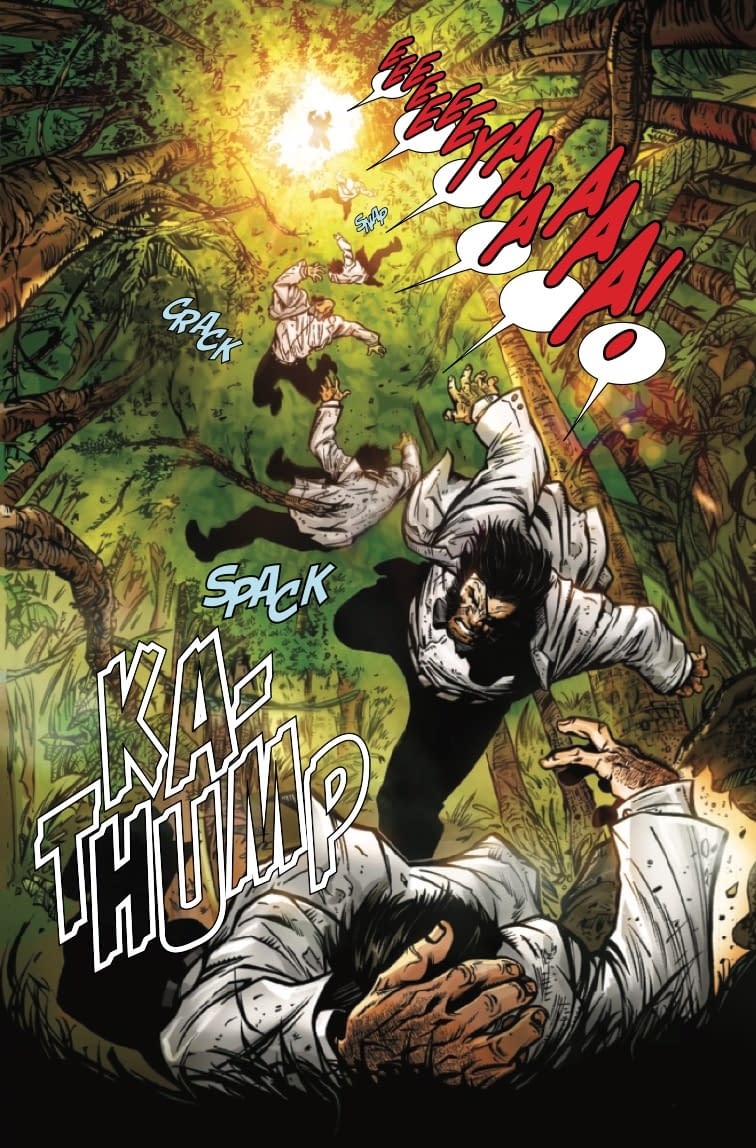Writer: Larry Hama
Artists: Andrea Di Vito and Le Beau Underwood
Marvel Comics, March 2022
Welcome to Madripoor, a seedy fictional substitute for the city-state of Singapore, perhaps, or perhaps more like Shanghai in the 1930s. Singapore after all is a highly regulated, benevolent police state. Shanghai in the 1930s was run by a conglomerate of Chinese criminal cartels, the Imperial Japanese Army, Nazi spies, posh British bankers, intriguing French diplomats, White Russian mercenaries, and hustlers from everywhere.

And so we turn to this new publication: Wolverine: Patch (#1 of 5) from American publisher Marvel Comics. The Canadian mutant superhero Wolverine, is the part-owner of a dingy bar in Madripoor. Wolverine’s 1980s-1990s Patch era has an old school fan base, mostly, we think, because of Chris Claremont and Jim Lee’s take on Patch in Uncanny X-Men #257-8 from January 1990. Wolverine during the 1990s was written as an enforcer named Patch living in Madripoor, with his disguise being, well, an eyepatch. Even Chris Claremont (speaking through Wolverine’s sidekick, Jubilee) did not think much of it:

It was not clever, but it was a new take on an established character. This new 2022 series written by Larry Hama, and with art by Andrea Di Vito and Le Beau Underwood, is a catastrophically-dated nostalgia trip. Patch/Wolverine is bribed by a local prince and cajoled by his business partners into investigating strange happenings in the middle of the Madripoori jungle. It evolves that some bad guys – their involvement first signalled by the sighting of a destroyed Russian VTOL aircraft, which currently seems to be in bad taste – are conducting secret experiments.

Wolverine has a brief, pointless confrontation with Colonel Nick Fury of secret agency SHIELD, and then literally jumps (from a plane, without a parachute) into the thick of it while wearing a white jacketed dinner suit with a carnation in his lapel. (Yes, this actually happens.)
Ah, the posturing men yelling at each other with pointed fingers, eyepatch to eyepatch; the half-dressed sexy women; the trio of a woman (Tyger Tiger) and a black man (Archie) asking for the help of the disinterested white male leader…. It really is a flashback to the gender cliches of the 1990s, or maybe to the tough guy adventure pulp of the 1930s. Is writer Larry Hama deliberately dating his story? Wolverine falls into the jungle, snaps his arm back into its socket, all the while engaging in a word balloon monologue. Without a hint of Brecht or even Deadpool, this famously sneaky character is literally narrating out-loud his moves and tactics. It is appalling.
The art also reminds us of the 1990s work of Mike Deodato: women with wasp waists and bared thighs, heavily muscled men, and clumsy layouts. Moving into the twenty-first century, a “patch” is a piece of software code designed to fix a coding flaw or “bug”. Perhaps this title, thankfully only five issues long, should have been called “Glitch”.

